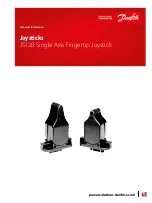
User’s Guide
PoE Powered Devices Debug Guidelines
ABSTRACT
This document provides the debug process for TI Power over Ethernet (PoE) Powered Device (PD) designs.
Most
problems occur in the DC/DC design. PoE uses the IEEE802.3 standard that includes IC vendors
and end-equipment designs, resulting in strict requirements for PoE operation. However, there are no such
requirements on DC/DC design. Unfortunately, the complex nature of DC/DC design leaves less margin of error
than one might expect, yet many degrees of freedom in design choices. This combination allows errors to slip in
undetected that can result in designs that do not work or cause damage.
Table of Contents
2 Preparation and Measurement Techniques
3 Narrowing Down the Problem Area
List of Figures
Trademarks
Sifos
®
is a registered trademark of Sifos Technologies, Inc..
All trademarks are the property of their respective owners.
Table of Contents
SLVAF74 – JULY 2021
PoE Powered Devices Debug Guidelines
1
Copyright © 2021 Texas Instruments Incorporated


































